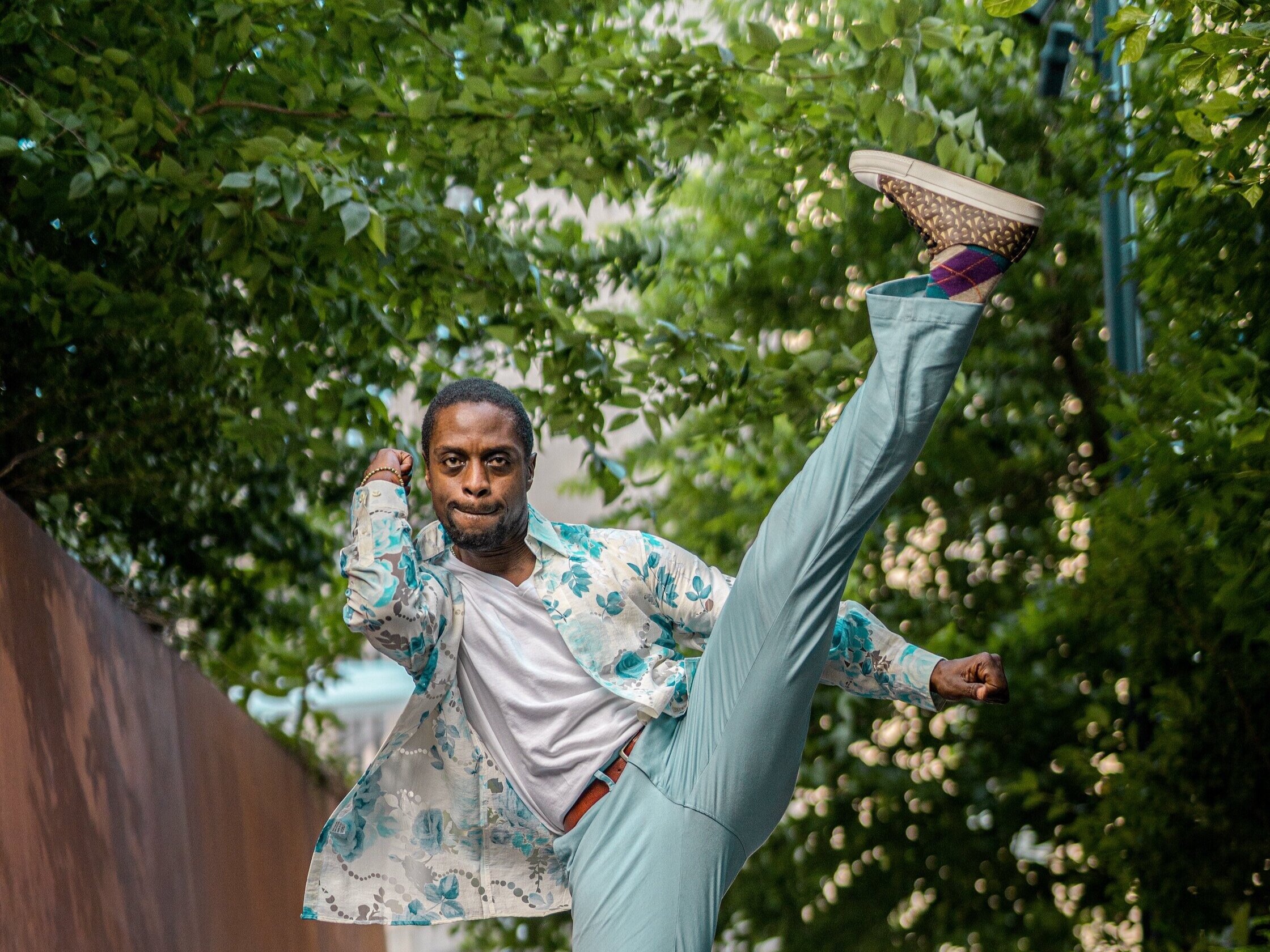
Photo: J.K. Lawson
Choreographer
Passionate Movements. Crews. Rhythmic Storytelling. Clubs. Funky Dramaturgy. Curtain Time.
SKELETON CREW
Choreographer
This Double-Billed Performer/Choreographer Is Bringing a Surprising Amount of Dance to Broadway’s Newest Play
ADESOLA OSAKALUMI IN SKELETON CREW. PHOTO BY MATTHEW MURPHY, COURTESY BONEAU/BRYAN-BROWN
How did you get involved in Skeleton Crew?
I was introduced to Ruben through a friend, another choreographer, Darrell Grand Moultrie. He explained what he wanted to do and how he envisioned it. And I was like, “I can do it. I’m the guy.” So, it was not your normal audition process. And then he called me back five years later and was like, “Hey, so, the show is going to go to Broadway, and I want you to come back.”
How do you conceive of your role?
It’s only alluded to in stage directions. It’s like, “the factory hums contentedly.” Or “the workers continue to move as the machinery starts to slowly break down.” That’s all. And Ruben envisioned bringing that spirit of the factory to life, but also showing the actual physical work that is done, because the play is set in the break room. And work is alluded to, but you never see anybody work. So Ruben was like, “Let’s show the dancing body, the Black body, at work.” He wanted something sharp and clean that expressed the power and specificity of the workers. He always talks about Detroit at one point being the center of America and by extension almost the center of the universe, because of the output of work and cars and factories, but also the music and culture that came out of Detroit. So he wanted a nod to both the auto industry and the musical legacy of Detroit.
What was your process for developing the movement like?
We had a creative team that was Jimmy Keys, who is Dominique’s husband, who did all the original music, Rob Kaplowitz, who did sound, and Chesney Snow, who did beatboxing. We would go in our own room and they would create music. It was really collaborative—I was able to request certain sounds. My own process was to use each transition as a storytelling element, either illuminating what just happened in the scene or leading us into a scene. My intention in the prologue is to tell the story of the whole two hours in two minutes. I give little physicalizations of what each character does. I think when people hear “hip hop,” they are like, “How can this be used as storytelling?” And I totally disagree. This shows that there are a variety of styles of dance that are worthy of the Broadway stage.
Why do you think those stories needed to be told through movement specifically?
Two reasons: The energy of the piece—it’s set in Detroit, it’s a natural extension of the music, culture, spirit. And, the rote, repetitive nature of a stamping plant. There are parallels between the rote, repetitive nature of people studying dance and training. It’s been one of the most-produced plays in the last three or four years, and not all of the productions have used dance, but a lot of them have, and I think that speaks to the validity of what Ruben and I set forth.
MOVEMENT DIRECTOR
HOW CULLUD WATTAH EMBODIES RUNNING WATER
A CONVERSATION WITH STEVEN VARGAS AND ADESOLA OSAKALUMI
It feels like liquid. Plum walks through the muckiest and murkiest water possible, letting each step feel as weighted and lulled as if dumbbells pulled each movement back. After all, murky is exactly how the water remains in Flint, Michigan. CULLUD WATTAH, the world premiere play by Erika Dickerson-Despenza and directed by Candis C. Jones at The Public Theater, sits in on the lives of a family of Black women in Flint, Michigan, who grow more concerned every day that their water supply remains dirty. As illnesses fester and a class action lawsuit arises, each person seeks their own way out. Movement Director Adesola Osakalumi shares how water informed the movement that made every scene more fluid and powerful.
Steven Vargas: One of the first things that came to mind was there's a lot of movement there behind the language. Can you tell me how you were able to utilize that language to put the movement on stage?
Adesola Osakalumi: I feel like Erika writes in such a visual way. In that regard, it made certain things easier because there was such a clear guideline as to how to address and how to approach it. I wanted to be naturalistic, and not move like traditional choreography. The play does have Afro-surrealist and Afro-futurist components, so there are dream-like elements. We played around a lot with suspension of time and small task-based gestures in terms of what the characters are trying to say throughout the course of the piece. But I wanted to do justice to what Erika wrote. She wrote something really beautiful and moving and a lot of what myself and my associate — who’s also my partner, Jill Vallery — really wanted to honor was the water concept. It’s about water, so a lot of the things that we did had water as a base. As we know, water adapts and morphs. It can be heated up and evaporate into steam and then become solid again, turning into ice, making it movable. So we used water and its elements to control how the characters move through the space….READ MORE
FILM & TV
STAGE



Dancer
Idlewild Dancer
© 2021, Adesola Osakalumi. All rights reserved
Design by LadyByrd





